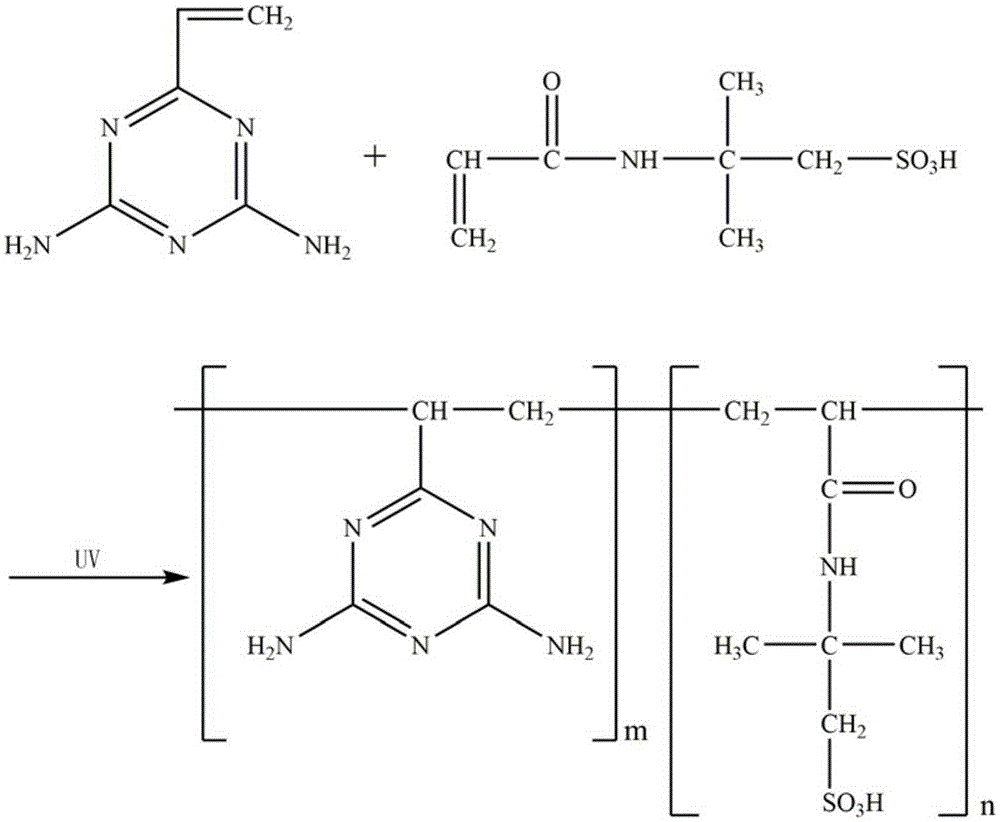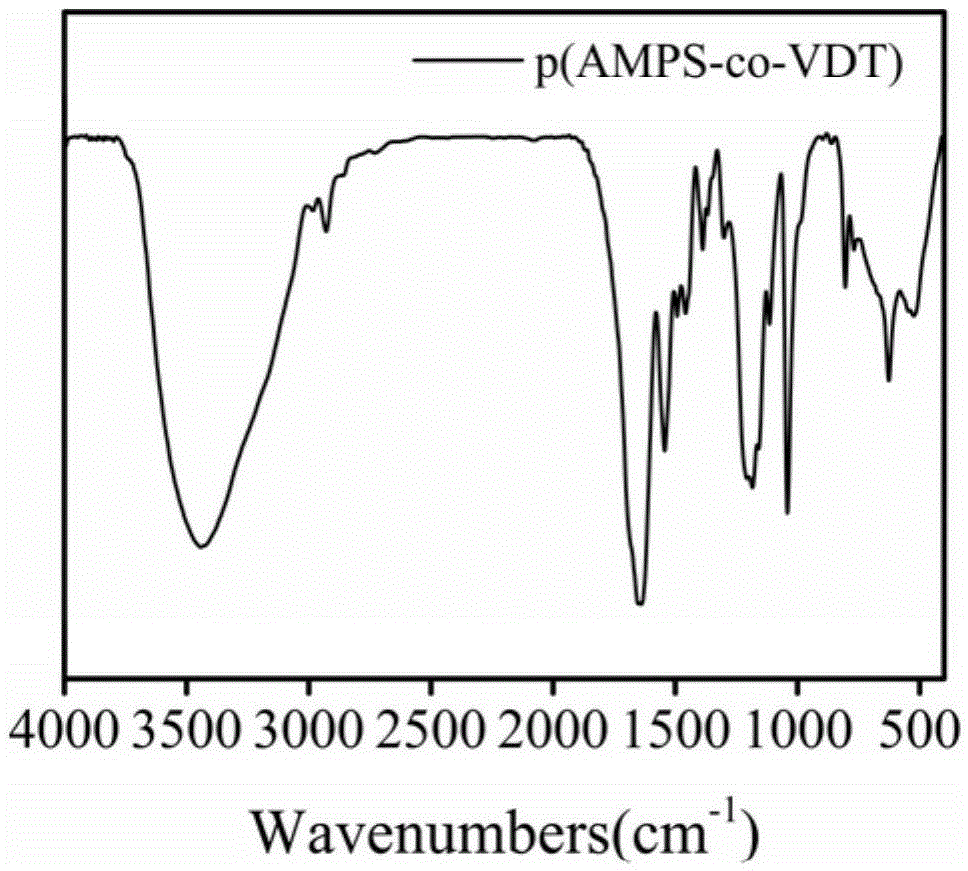Hydrogel used for adsorbing heavy metal and preparing method and application thereof
A technology for adsorbing heavy metals and hydrogels, which is applied in the direction of adsorption of water/sewage treatment, chemical instruments and methods, and water pollutants. It can solve the problems of difficult recycling, poor reusability, and low adsorption capacity, and achieve an increase in adsorption capacity. , enhance the mechanical strength, increase the effect of adsorption capacity
- Summary
- Abstract
- Description
- Claims
- Application Information
AI Technical Summary
Problems solved by technology
Method used
Image
Examples
preparation example Construction
[0035] The preparation method of above-mentioned hydrogel is carried out by following reaction equation:
[0036]
[0037] The specific steps are as follows:
[0038] (1) 2-vinyl-4,6-diamino-1,3,5-s-triazine (VDT) and 2-acrylamide-2-methylpropanesulfonic acid (AMPS) are mixed as reactants, then Add 1% to 10% of the total mass of the reactants and a photoinitiator of 1% to 2.5% of the total mass of the reactants, and dissolve them uniformly in the organic solvent together with the reactants; the crosslinking agent can be N , N-methylenebisacrylamide, polyethylene, polyvinyl chloride, chlorinated polyethylene, etc., the photoinitiator can be 2-hydroxy-4-(2-hydroxyethoxy)-2-methylbenzene Acetone, azobisisobutyl, diphenylethanone, 2,4-dihydroxybenzophenone, etc., the organic solvent can be dimethyl sulfoxide, acetone, methanol, n-hexane, etc.; due to the VDT Amino groups and triazine groups can form a six-membered ring structure through hydrogen bonding. The molar ratio of VD...
Embodiment 1
[0044](1) Weigh 137.15mg VDT (2-vinyl-4,6-diamino-1,3,5-s-triazine), 310.875mgAMPS (2-acrylamide-2-methylpropanesulfonic acid) (VDT and The molar ratio of AMPS is 2:3) as a reactant, and 19.275 mg (5% of the total mass of the reactant) of MBAA (N,N-methylenebisacrylamide) was added to a 5ml centrifuge tube, and the mixture was ultrasonically dissolved In the dimethyl sulfoxide of 3.70ml, obtain mixed solution A; Then in mixed solution A, add photoinitiator 2-hydroxyl-4-(2-hydroxyethoxy)-2-methyl propiophenone 11.21mg ( 2.5% of the total mass of the reactant), sonicated until completely dissolved to obtain the mixed solution B.
[0045] (2) Slowly inject the mixed solution B into the mold, seal it with a rubber silicon tube and clamp it with a clip, and irradiate it under a 20W ultraviolet lamp for 20 minutes to obtain a hydrogel polymer. The reaction equation is as follows figure 1 shown.
[0046] (3) The obtained copolymer hydrogel polymer is taken out from the mold, rinsed...
Embodiment 2
[0048] Repeat Example 1 with the same steps described above, the difference is that the crosslinking agent is polyethylene, the photoinitiator is azobisisobutyl, and the organic solvent is acetone, methanol, and n-hexane.
PUM
| Property | Measurement | Unit |
|---|---|---|
| pore size | aaaaa | aaaaa |
| adsorption capacity | aaaaa | aaaaa |
Abstract
Description
Claims
Application Information
 Login to View More
Login to View More - R&D
- Intellectual Property
- Life Sciences
- Materials
- Tech Scout
- Unparalleled Data Quality
- Higher Quality Content
- 60% Fewer Hallucinations
Browse by: Latest US Patents, China's latest patents, Technical Efficacy Thesaurus, Application Domain, Technology Topic, Popular Technical Reports.
© 2025 PatSnap. All rights reserved.Legal|Privacy policy|Modern Slavery Act Transparency Statement|Sitemap|About US| Contact US: help@patsnap.com



